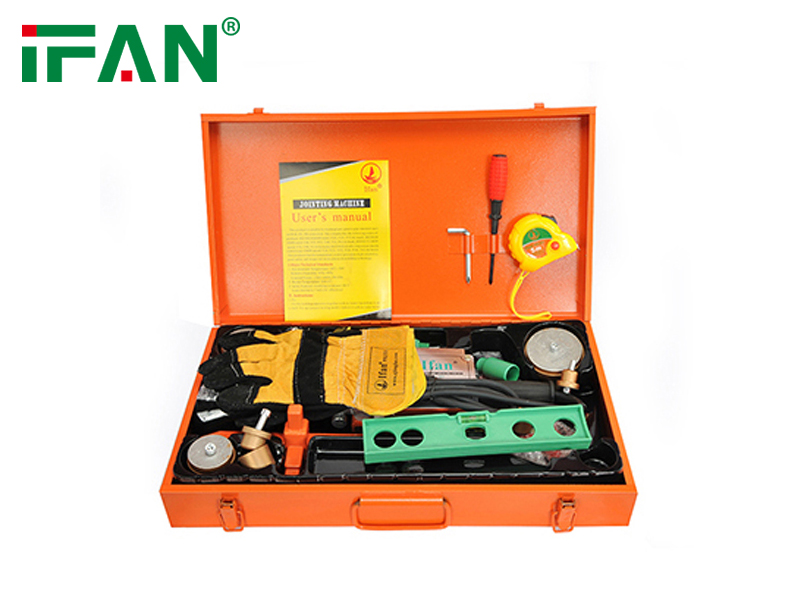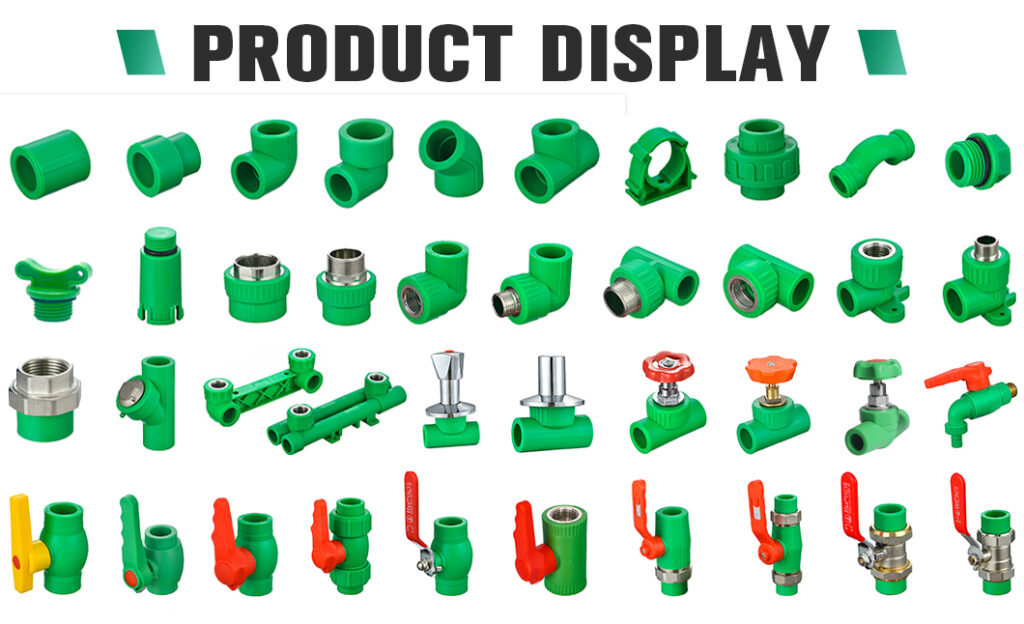IFAN PPR welding machine is a tool that uses to join two or more pieces of plastic pipes. It is a reliable and efficient method of creating a strong, leak-proof joint that can withstand high pressures and temperatures. The PPR welding machine used in plumbing, heating, and cooling systems, as well as in industrial applications.
When it comes to using the PPR welding machine, there are several important factors to consider. These include the type of plastic pipe being used, the size of the pipe, the temperature and pressure requirements of the system, and the experience and skill level of the operator. In this article, we will provide a comprehensive guide on how to use the PPR welding machine, including tips and tricks for achieving the best results.
What is a PPR welding machine?
A PPR welding machine is a device used to join two or more plastic pipes together by heating them and then fusing them together. The welding machine uses a combination of heat and pressure to melt the plastic pipes and create a strong and durable joint. The PPR welding machine uses in plumbing, irrigation, and other applications where plastic pipes are used.
The PPR welding machine consists of a heating element, a pressure mechanism, and a control unit. The heating element uese heat the plastic pipes to the desired temperature, while the pressure mechanism applies pressure to the pipes to ensure a strong and secure joint. The control unit use regulate the temperature and pressure during the fusing process.
One of the advantages of using a PPR welding machine is that it creates a joint that is as strong as the original pipe. This is because the fusing process creates a seamless joint that is free from any weak spots or areas of potential leakage. Additionally, the fusing process is quick and easy, making it an efficient way to join plastic pipes together.
It is important to note that the PPR welding machine design specifically for use with plastic pipes made from polypropylene random copolymer (PPR). Attempting to use the welding machine with other types of plastic pipes can result in damage to the pipes or a weak joint that is prone to leakage.

How does the PPR welding machine work?
The PPR welding machine is a device that is used to fuse plastic pipes together. It uses a combination of heat and pressure to melt the ends of two plastic pipes and join them together. The PPR welding machine is a very simple device, but it is very effective and can be used to join pipes of different sizes and shapes.
The PPR welding machine works by heating up the two ends of the plastic pipes to be joined. The heat is generated by an electric heating element that is located inside the device. When the heating element is turned on, it heats up the metal plates that are located on either side of the device. These metal plates are then pressed against the ends of the plastic pipes, which causes them to melt and fuse together.
The PPR welding machine is very easy to use. To use the device, you simply need to place the two ends of the plastic pipes into the device and turn on the heating element. The device will then heat up the two ends of the pipes until they are melted and fused together. Once the fusion is complete, the device can be turned off and the pipes can be left to cool down.
The PPR welding machine is a very versatile device that can be used to join pipes of different sizes and shapes. It can be used to join pipes made from different types of plastic, including PPR, PVC, and PE. The device is also very easy to maintain and can be cleaned using a damp cloth.
In conclusion, the PPR welding machine is a very effective device that can be used to join plastic pipes together. It works by heating up the ends of the pipes and then pressing them together to create a strong, permanent bond. The device is very easy to use and can be used to join pipes of different sizes and shapes. If you need to join plastic pipes together, the PPR welding machine is a great tool to have in your toolbox. This is our Facebook Website:www.facebook.com,IFAN factory has 30+ years manufacture experience supporting color /size customization support Free Samples.

Section 4: Preparing to Use the PPR welding machine
Before using the PPR welding machine, it is important to properly prepare the machine and the materials to use. This section will outline the steps necessary to ensure that the fusing process goes smoothly and produces high-quality results.
The first step is to gather all of the necessary materials. This includes the PPR welding machine, the materials that will fuse (such as paper or fabric), and any additional supplies that may be needed (such as adhesive or transfer paper).
Next, it is important to set up the welding machine in a clean and well-lit workspace. The machine place on a sturdy and level surface, and all safety precautions should be taken (such as wearing gloves and eye protection).
Once the machine is set up, it is important to ensure that it is properly calibrated. This can be done by following the manufacturer’s instructions for calibrating the machine, or by using a calibration tool if one is provided. Calibration is important because it ensures that the welding machine will produce consistent and accurate results.
Finally, it is important to test the welding machine before using it on any important or valuable materials. This can be done by fusing a small sample piece of material and checking for any issues or defects. If any issues are found, they should be addressed before using the welding machine on larger or more important materials.
By properly preparing the PPR welding machine and the materials that will be used, users can ensure that the fusing process goes smoothly and produces high-quality results. Taking the time to properly prepare for fusing can save time and money in the long run by avoiding mistakes and defects.
Steps for Using the PPR welding machine
A welding machine is a powerful tool that can help you quickly and easily fuse plastic pipes together. Whether you’re a professional plumber or a DIY enthusiast, the welding machine can make your job easier and more efficient. Here are the steps for using the welding machine:
Step 1: Prepare the Pipes
The first step in using the welding machine is to prepare the pipes that you want to fuse together. Make sure that the pipes are clean and free of any debris or dirt. Use a pipe cutter or saw to cut the pipes to the desired length, and then use a welding machine tool to smooth the edges of the pipes. This will help to ensure a tight, leak-free seal when the pipes are fused together.
Step 2: Set the Temperature
Once the pipes prepare, it’s time to set the temperature on the PPR welding machine. The temperature will vary depending on the size and type of pipe that you are working with, so be sure to consult the manufacturer’s instructions or a professional plumber for guidance. Once you have determined the correct temperature, set the welding machine to the appropriate setting.
Step 3: Insert the Pipes
With the temperature set, it’s time to insert the pipes into the welding machine. Be sure to align the pipes correctly, and push them firmly into the welding machine until they are flush with the heating plate. Hold the pipes in place for the recommended amount of time, which will also vary depending on the size and type of pipe that you are working with.
Step 4: Remove the Pipes
After the recommended amount of time has passed, carefully remove the pipes from the welding machine. Be sure to wear gloves or other protective gear, as the pipes will be hot. Use a pipe clamp to hold the pipes in place while they cool, which will help to ensure a tight, leak-free seal.
By following these simple steps, you can use the welding machine to quickly and easily fuse plastic pipes together. Whether you’re working on a large-scale plumbing project or a simple DIY repair, the PPR welding machine can help you get the job done right. If you want to know more about our products, please feel free to contact IFAN, and we will provide you with the best choice!

